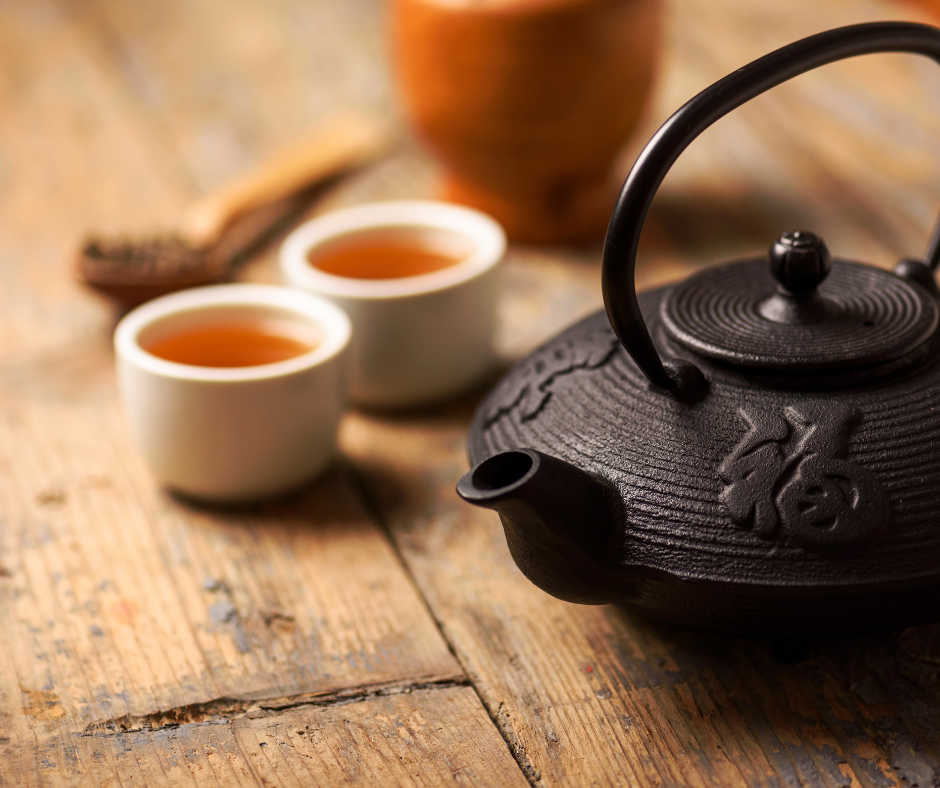
The citadel of cardiovascular well-being is not impervious; it yields to the profound influence of lifestyle choices. In the intricate tapestry of life, our heart, the guardian of vitality, commands center stage. Irrespective of age, the sanctity of heart health remains an unwavering priority. History has cast heart disease as the perennial adversary, claiming the top spot among the culprits responsible for American fatalities.
Initiating the journey toward holistic well-being might appear daunting, especially if one’s physical state leaves much to be desired. Fret not; profound transformations often spring from seemingly minor adjustments. The key lies in forging incremental changes capable of echoing far-reaching impacts, nudging those ominous numbers your physician diligently tracks in a favorable direction.
We embark on a voyage through the realm of cardiovascular health, with nutrition as our guiding star, charting a course to anchor healthy cholesterol and blood pressure levels.
Table of Contents
The Gastronomic Odyssey: Part One – Embrace a Wholesome Diet
In our breakneck-paced society, where convenience often supersedes health considerations, nourishing our bodies optimally presents a Herculean challenge. Disturbing findings underscore the alarming correlation between fast-food indulgence and metabolic syndrome, a precursor to an ominous quartet: cardiovascular disease, type 2 diabetes, high blood pressure, and elevated cholesterol levels.
Fast food’s perilous allure lies in its seductive blend of processed meats, trans fats, and excessive sugar – a trifecta that stealthily augments caloric intake without commensurate nutritional value. This insidious alliance contributes to the perilous realms of weight gain, erratic blood sugar profiles, and cellular oxidative stress.

A Heart-Healthy Banquet unfurls, replete with whole, fiber-rich, minimally processed fare teeming with the essential nutrients and vitamins vital for our flourishing. The American Heart Association, in a clarion call to heart-conscious eating, issued updated guidelines in 2021. The decalogue of dietary wisdom beckons:
Caloric Prudence:
Consume calories judiciously, with those seeking weight loss diligently charting a course toward a calorie deficit, expending more than they ingest.
Plant Bounty:
Elevate the status of fruits and vegetables in your dietary repertoire.
Whole Grains:
Favor whole-grain foods, minimally processed, such as whole wheat, oats, and brown rice.
Trans Fat Taboo:
Vigilantly shun trans-fats and their nefarious cousin, partially hydrogenated fats.
Lean Protein Ascension:
Elevate plant-based protein sources, omega-3-rich fatty fish, and lean poultry, relegating red meat to a minor role.
Processed Foods Exile:
Avoid the quagmire of highly processed victuals.
Sugars Unmasked:
Prefer foods devoid of added sugars.
Moderate Alcohol:
Exercise restraint in alcohol consumption, or refrain entirely if you do not partake.
Salt Scrutiny:
Examine salt intake critically, and curtail as needed.
Guidelines, Aplenty:
Manifest adherence to these guidelines, both domestically and gastronomically.
The climb may seem steep, but remember that the most formidable journeys commence with a single stride. Envision crafting small adjustments as the building blocks of your flourishing.
The Gastronomic Odyssey: Part Two – Embark on a Culinary Adventure
The second leg of our odyssey beckons us to embark on a physical voyage, one drenched in cardiovascular exercise. The Centers for Disease Control and Prevention beckon adults to embrace 150 to 300 minutes of moderate cardiovascular exercise or 75 to 150 minutes of vigorous exercise weekly.
This clarion call to action isn’t an endorsement of sweaty gym sessions or perpetual confinement to malodorous locker rooms. Quite the contrary, for something as simple as walking can herald profound transformations. Walking stands as a beacon of accessibility, a low-intensity endeavor welcoming almost any healthy adult.
The voyage commences with baby steps – a brisk ten-minute walk daily or a brief cycle during the lunch hour. With accrued stamina, transition to high-intensity endeavors. If the scarcity of time casts shadows, the elixir of high-intensity interval training might offer respite. In this rigorous regimen, short bursts of explosive movements punctuate brief intermissions, hastening the achievement of the target heart rate. In as little as 15 minutes, you can orchestrate a harmonious crescendo in your heart’s symphony, reaping the bounteous rewards of aerobic exercise.
But wait, the plot thickens. Recent revelations, etched in a meta-analysis of ten seminal studies, illuminate the significance of strength training as a guardian of heart health. Engaging in physical activity, including strength training, whittles away the mortality rate by 15 percent. Astonishingly, the benefits persist, even if strength training encounters intermissions. Evidently, the fortifying touch of strength training upon the heart is enduring.
So whether you groove to the rhythm of moderate-intensity exercise or sculpt your physique through resistance training, the watchword is consistency, peppered with versatility, to amplify your heart’s well-being.
The Weighty Matter: Balance the Scales
If each passing year deposits an extra five pounds upon your frame, a perilous journey towards heart failure could be your unwelcome destiny. Ponder this: individuals sporting a body mass index (BMI) ushering them into the realm of obesity nestle in the vortex of heightened cardiovascular disease risk. Obesity, a frequent companion of sedentary living, portends a perilous cohort of adversities – hypertension, elevated cholesterol levels, and metabolic syndrome.
If your BMI tiptoes into treacherous territory, salvation lies in the arms of healthy weight loss. The union of a salutary diet with regular exercise lays the groundwork for shedding unwanted pounds, safeguarding your heart, and garnering accolades from your healthcare provider.
Mastering the Tempest: Taming Stress
When the tempest of stress engulfs your world, tread cautiously, for it conceals the seeds of heart malaise. Chronic stress, a protracted ordeal stretching beyond the fortnight mark, is a harbinger of cardiovascular tribulations. Counter the maelstrom with techniques designed to soothe the psyche.
Yoga or Meditation:
Enlist the serenity of yoga or mindfulness meditation, beckoning you to delve into the realm of deep breathing, mindful presence, and an intimate connection with your inner landscape.
Therapeutic Dialogue:
Share the weight of your troubles with a trusted friend or therapist, inviting their support and forming a united front to battle life’s travails.
The Slumber Reverie: Court the Sandman
As night falls, the realm of dreams beckons, offering a salve for your soul. In the realm of heart health, sleep assumes a pivotal role. Several studies elucidate the intimate connection between insomnia and heightened cardiovascular disease risk. The magic number lies between seven to nine hours of unadulterated slumber per night, a prescription for cellular rejuvenation and blood pressure regulation.
Beware the slippery slope of sleep debt; missed hours translate into accrued deficits. Cumulative in nature, these deficits signal the body’s yearning for compensatory slumber, demanding a robust repayment.
Herbal Elixirs: Supporting Cardiovascular Symphony
In tandem with your journey toward heart-conscious living, the realm of herbal supplements unveils an arsenal to bolster your cardiovascular citadel.
Hawthorn:
An ancient guardian, Hawthorn, lends its leaves and berries to Ayurvedic medicine, a timeless tradition attesting to its heart-supporting prowess.
Olive Leaf:
Laden with polyphenols and antioxidants, the Olive Leaf dons the cloak of heart sentinel. Antioxidants, vigilant guardians against free radicals, ensure the vitality of your cells, shielding them from the pernicious clutches of disease.
Reishi Mushroom:
An emblem of longevity and heart health, Reishi Mushroom finds its veneration in diverse domains, including immune bolstering.
Green Tea:
If the thought of sipping tea doesn’t tantalize your palate, Green Tea supplements offer a convenient alternative. They champion healthy weight and vitality, intertwined with the symphony of heart health.
As the curtain descends on our gastronomic and wellness odyssey, remember that safeguarding your heart emerges as an ode to life itself. Let the cadence of your choices resonate with the harmonious melody of cardiovascular health, a serenade to longevity and vitality. Seize the reins of your destiny, nurturing your heart while embracing life’s myriad pleasures.
What is the primary focus of the blog post “Unlocking Cardiovascular Wellness: The Nutritional Nexus”?
The primary focus of the blog post is cardiovascular wellness and how nutrition plays a crucial role in maintaining a healthy heart.
What are the top contributors to heart disease ?
The top contributors to heart disease are fast food indulgence, obesity, sedentary living, and chronic stress.
What are the dietary guidelines recommended by the American Heart Association ?
The American Heart Association’s dietary guidelines include consuming calories judiciously, prioritizing fruits and vegetables, favoring whole grains, avoiding trans fats, choosing lean protein sources, avoiding processed foods, preferring foods without added sugars, moderating alcohol consumption, scrutinizing salt intake, and adhering to these guidelines consistently.
How much cardiovascular exercise does the Centers for Disease Control and Prevention recommend for adults?
The Centers for Disease Control and Prevention recommend that adults embrace 150 to 300 minutes of moderate cardiovascular exercise or 75 to 150 minutes of vigorous exercise weekly.
What is the significance of walking in maintaining cardiovascular health?
Walking is highlighted as an accessible and effective form of cardiovascular exercise that can lead to significant health benefits, even with just a brisk ten-minute walk daily.
What is high-intensity interval training (HIIT), and how can it benefit cardiovascular health ?
High-intensity interval training (HIIT) involves short bursts of explosive movements with brief intermissions. It can help achieve the target heart rate and provide the benefits of aerobic exercise in as little as 15 minutes.
How does strength training impact heart health?
Recent studies suggest that engaging in strength training can reduce the mortality rate by 15 percent, even with occasional interruptions, demonstrating its enduring benefits for heart health.
What role does maintaining a healthy weight play in cardiovascular wellness ?
Maintaining a healthy weight through a balanced diet and regular exercise is essential for reducing the risk of cardiovascular diseases, especially for individuals with a high body mass index (BMI).
How does chronic stress relate to cardiovascular health ?
Chronic stress is linked to heightened cardiovascular disease risk, and suggests techniques like yoga, meditation, and therapeutic dialogue to mitigate its effects.
What is the recommended amount of sleep for optimal cardiovascular health?
Recommends getting seven to nine hours of uninterrupted sleep per night for cellular rejuvenation and blood pressure regulation, emphasizing the importance of avoiding sleep debt.



